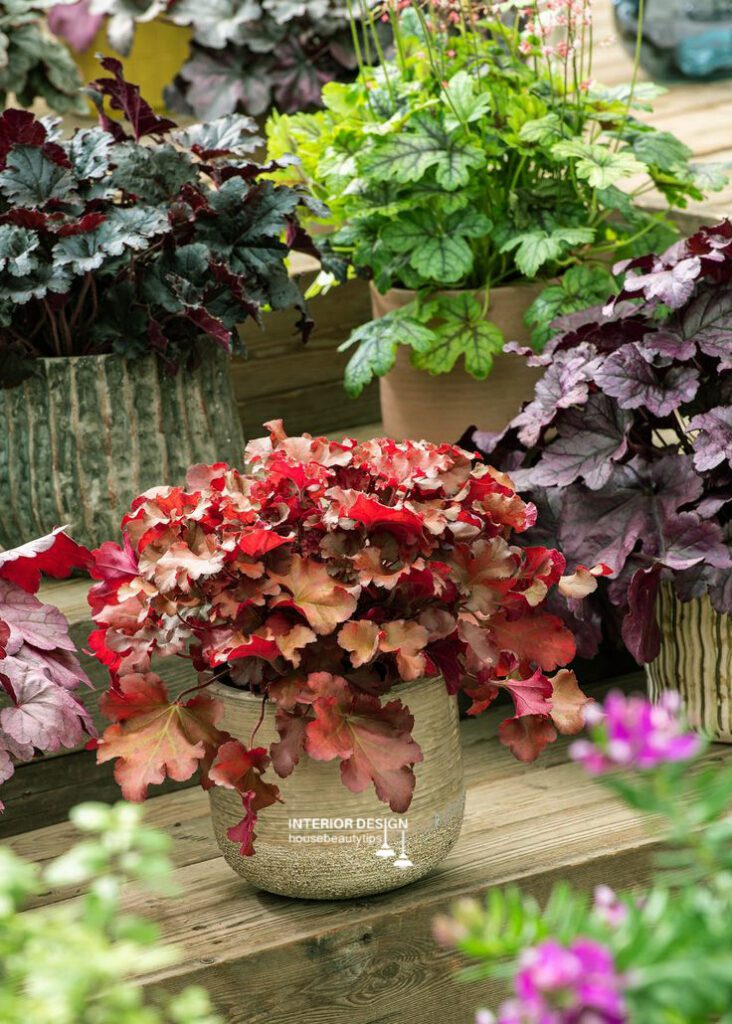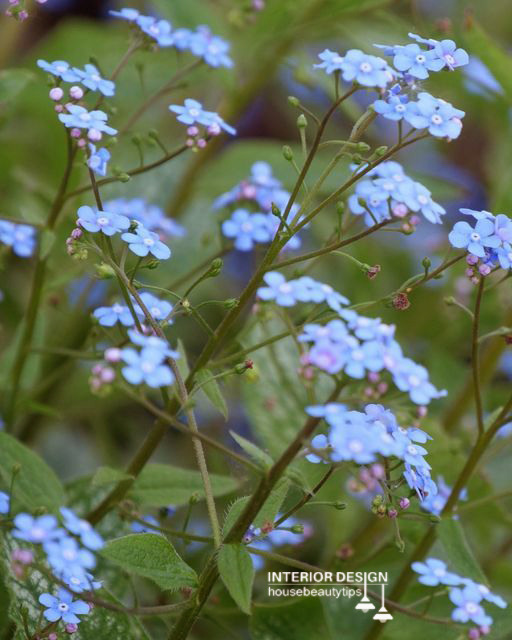13 Gorgeous Shade-Loving Plants to Transform Your Garden in 2025
Gardening in a shaded area is not a reason to watch your garden deprived of colour, texture or passion. Many shaded-loving plants can grow in an area with little or no direct sun exposure – this can add that lush green look to any garden area including woodland beds or shaded borders. This article contains all the information you need if you are looking for plants that prefer shade to complement your landscape; within this article, you will find the 25 best shade flowers and foliage plants that can turn dull, low-light areas into vibrant areas. Regardless of what you are looking for, you will find ground covers, shrubs, flowers and other flowering plants here.
The Best Shaded Plants for Every Garden

This article provides full-shade plants that help to add depth, beauty and life to these shaded areas ranging from hardy ground covers to tropical-looking perennials.
1. Vinca Minor Periwinkle Vine

Very fast-growing and trailing, Vinca Minor Periwinkle Vine is ideal for producing a lush green cover on shaded spaces. Opposite vibrant periwinkle-blue flowers appear in spring and early summer set against deep, lustrous green foliage. Periwinkle is one of the best plants for erosion control as it does well even under large tree coverage. It is very adaptable to different garden soil types and greatly resists many of the pests found in shaded areas; thus making it a very practical ornamental plant for shaded landscapes.
2. ‘Chocolate Chip’ Bugleweed

’Chocolate Chip’ Bugleweed is an aromatic perennial that lies flat and has a compact growth pattern making it ideal for use on the ground. The small blue flower raceme is produced in late spring or early summer and provides an attractive addition to the depth of the foliage colour. Bugleweed is useful to just fill in an area, do a good job crowding out weeds and add blue and dark green to the mix. It has a placement of part shade to full shade and prefers moist well-drained soil to add on. It is suitable for rock gardens, woodland beds, and shaded borders among others.
3. ‘Chantilly Lace’ Goatsbeard

Adding a sophisticated touch to your garden, ‘Chantilly Lace’ Goatsbeard is a delightful plant to have. Feathery plumes of white which appear lace-like form the profile of this plant against the green background of leaves. Goatsbeard can grow up to 48 inches tall and it is best used for boarding up shady garden spaces. It prefers wet soil and will grow well in an area of partial to full shade, good for large garden borders or at the edge of water gardens.
4. Cherry Heuchera

Cherry Heuchera – is an ornamental perennial that has bright cherry red leaves which remain coloured in all seasons. Properly, Heuchera introduces an attractive splash of colour where the sun doesn’t reach and can be successfully combined with other shade plants with varying colours. During late spring, Heuchera bears small white flowers that work well on its rich-coloured leaves. Cherry heuchera is propagated both in containers and in places that are shaded and prefers well-drained and loamy soils.
5. ‘Queen of Hearts’ Siberian Bugloss

Siberian Bugloss ’Queen of Hearts’ is unique for its heart-shaped leaves which make it an excellent addition to shaded gardens. Light and airy, with its silvery green and blue patterned foliage and spring blue flowers, this plant provides a peaceful, dignified flair to full shade. Siberian Bugloss is a rather undemanding plant, which has no strict requirement for the type of soil, but it is better to keep it in a rather moist environment. It has a neat habit of rich foliage, which keeps interest during the summer in shaded beds and borders.
6. Blue Oat Grass

Although Blue Oat Grass loves sunny looks, it performs decently in partial shade and adds texture, as well as attractive colour, to the shaded sites. Growing to be more columnar, this plant adds height and curves to the garden while its blue-grey leaves look good when surrounded by broader plants such as Hostas and ferns. Blue Oat Grass is strong, and tough and might do well in dry conditions, and it has a more contemporary/upright structure, looks great in pots, in raised boxes or as a low-maintenance ground cover with part to full shade.
7. Foxglove

Foxglove is a very traditional plant for the cottage-style garden and, with its tall spindle-shaped flowers, gives a vertical interest to the shaded border. As a biennial plant, Foxglove grows in pink, purple, and white and supports pollinators such as bees and even hummingbirds to bring life to the garden. These magnificent shade-attiring plants require semi-shade to shade and are adapted best to grow in fertile, organic, well-drained soil conditions. As they can grow to between 2-4 feet in height they are perfect for the back of a shady border.
8. Gigantea Primrose

Fragrant, Sunny Yellow blooms and erect growth habits make Gigantea Primrose a welcome addition to shade gardens. This variety of primrose is best planted in partial shade and is ideal for wood plantations. Taller flower stems support the plant’s pollinators and the bright-coloured flowers make their presence feel like a refreshing addition to shaded sections. Primrose grows best in loose, moist soil, with the ability to spread across a wide area and bloom from late spring to early summer giving plant interest for the season.
9. Browallia

Browallia commonly called sapphire flower is a tender perennial plant characterised by quaint celeste star-shaped flowers that can be blue or purple. The rather unobtrusive, delicate appearance of this plant places it well as a candidate for the shaded garden beds and containers where it would add an air of delicate otherworldliness. Browallia grows where it has full to partial shade either in front of the fence or in a darker area of the garden. Indeed, it is very hardy and does not require much attention all while blooming from summer until fall.
10. Hosta

Hostas serve as a mainstay in a shade garden for very valid reasons. These long-lived plants can be found in many shades of green leaves through forms and textures from simple solid blue-green to complex white and green. These grow well in full shade and hosta lend themselves to beautiful texture in their dense foliage that supports other plants well. Occasionally used for its foliage, Hostas can produce tall flower spikes in summer, bearing small, lavender or white flowers. They can be used as shaded borders or ground cover or even as container plants.
11. Marginata Lime Sweet Potato Vine

If you want to give your shade garden a tropical look then Marginata Lime Sweet Potato Vine should suit your needs. This trailing plant has vibrant light green foliage that complements the deeper greens of other plants that thrive in shadier environments. Its bright green leaves are excellent for providing lush contrast when grown in pots, baskets or as a flowering ground in mostly shady areas. Sweet potato vine is also somewhat tender and very easy to propagate, as well as it can be grown in different kinds of soil, so it is also perfect for shaded garden areas.
12. Shade Porch Hummingbird Begonia

If you want to plant the hummingbird vines in the shade you can go for Shade Porch Hummingbird Begonia. This begonia type has rich green foliage and bears bright red or orange-coloured flowers which attract hummingbirds. It grows best in partial to full shade and is very adaptable to containers and therefore perfect for shaded decks, porches, or hanging baskets. Begonias like their soil to drain well and contribute an exotic feel to shade garden areas.
13. Ligularia

Ligularia is a striking plant which is effective in areas which are more shady and wet preferring large heart-shaped foliage to other plants. It grows upright dark green leaves and in mid-summer, bears tall narrow yellow bracts. As mentioned above Ligularia thrives well in shaded areas with moisture-rich soil making it appropriate for the areas surrounding ponds or waterfalls. Because of its large size and fluted leaves, it is an excellent plant for providing height and a dramatic feature to shade gardens.
Conclusion
Weekender, These shade-loving plants can turn black spots, garden fringes, and shaded zones into artificed vibrant, tranquil zones. Shade gardening allows for creativity with texture, ground cover and planting design possibilities and demonstrates that a gorgeous, lush garden can be cultivated in low-light environments.
